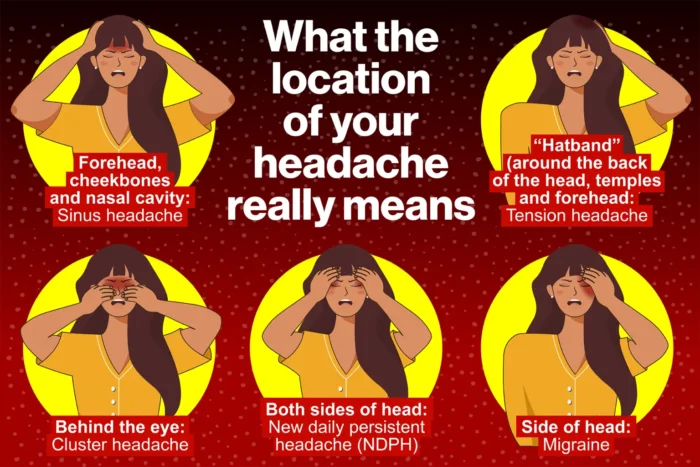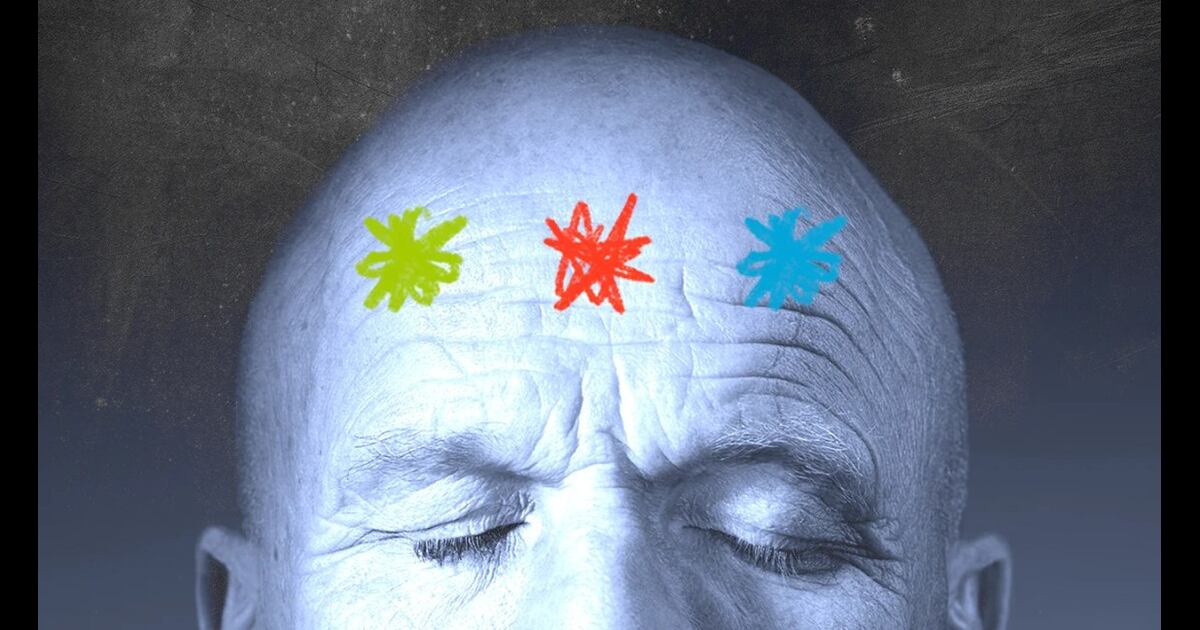Headaches are a common affliction, but the location of your pain holds vital clues about their cause. Discover how different types of headaches manifest in various regions of the head.
The origin of headaches is a complex matter, and the location where one experiences this discomfort often provides essential clues about its underlying cause. Whether it’s a throbbing sensation in the forehead, a sharp pain around the temples, pressure behind the eyes, or an ache at the back or side of the head, each location carries distinct significance and necessitates specific treatment approaches.

There are 6 certain types of headaches, take a look at what they are:
- One common type of headache is the “hatband” headache, characterized by pain encircling the back of the head, temples, and forehead, as if a tight hat is constricting the head. This type is typically a tension headache, the most prevalent primary headache worldwide.
- Tension headaches result from muscle tension in the shoulders, neck, scalp, or jaw, leading to sensations of pressure, dullness, and tightness. They can last for hours or even days, and they often affect more women than men.
- On one side of the head, you may experience a moderate to severe headache, likely indicative of a migraine. Migraines are a pervasive global issue, affecting about one billion people. They are the second leading cause of worldwide disability and can be hereditary, often running in families. Migraines come with a range of symptoms, including nausea, vomiting, sensitivity to light, sound, and smell, mood changes, and can last from four to 72 hours. Unfortunately, there is no known cure for migraines.
- Pain located behind or around one eye is often associated with cluster headaches, a less common type that affects fewer than one in 1,000 adults, with a higher incidence in men. Cluster headaches are some of the most excruciating headaches, lasting 20 minutes to two hours. They are one-sided and accompanied by symptoms like a stuffy nose, tearing, an enlarged pupil, droopy eyelid, or eye redness. The exact cause of cluster headaches remains unclear, but they are more prevalent among smokers.
- Headaches focused on the forehead, cheekbones, or nasal cavity typically indicate sinus headaches. These often result from sinus infections, which can be bacterial, caused by allergies, chronic inflammation, or structural issues such as nasal polyps. Sinus headaches are often accompanied by other symptoms like a runny nose, painful teeth, bad breath, coughing, fever, and fatigue.
- When headaches occur on both sides of the head and persist continuously without responding to typical treatments, they might be new, daily persistent headaches (NDPH). This rare chronic headache disorder arises suddenly, causing moderate to severe pain that can last for years or even a lifetime. NDPH symptoms may resemble tension headaches or migraines but follow a distinct pattern, lasting at least three months with constant pain.
If your headache seems to encompass your entire head, dehydration might be the root cause. Dehydration headaches occur when the body lacks sufficient fluids, leading to pain along with other dehydration symptoms like fatigue, dizziness, extreme thirst, and dry mouth.
The remedy typically involves drinking more water, resting, and taking pain relief medications to alleviate the discomfort.
Understanding the location of your headache is crucial in determining its cause and the appropriate treatment. Whether it’s a tension headache, migraine, cluster headache, sinus headache, NDPH, or a simple case of dehydration, identifying the source of your discomfort is the first step in finding relief.








Leave a Reply
You must be logged in to post a comment.